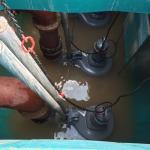Is it better to repair or replace a failed pump motor?
A regular debate we hear is whether it’s better to repair or replace a failed pump motor. In our opinion, it is a much better proposition for it to not fail in the first place
Ball-bearings
More than 50% of motor failures can be attributed to bearings. And more often than not it will be due to incorrect lubrication. Problems arise due to the use of too much or too little lubricant or even the wrong type of lubricant.
The average bearings need to be serviced at least every 2000 hours. However, over-greasing can lead to overheating and failure. It is important to use the manufacturer’s specification to lubricate the bearings, taking into account how the motor is mounted, its speed, and the type of bearings installed.
Overheating
Overheating is a common problem that can cause premature motor failure. This is because heat can come from many sources- the motor load, surrounding temperature, and mechanical stress. Any of these can cause the insulation of the motor to begin to break down and increasing stress and causing failure.
One of the key considerations that we take when making pump recommendations is the running time and load that the pump motor will be under. For example, pumps that run continuously will need to be fitted with bearings that can resist wear during these high operating hours and will have to be lubricated in line with the manufacturer’s recommendations.
If the pump is operating under a high load, then this can put unnecessary stresses on the motor and bearings which can, in turn, create higher friction and overheating
External Particulates
Finally, the ingress of foreign objects into the pump body can cause significant damage. This is especially crucial in the case where there is likely to be solids within the pumped effluent. In this case, choosing the correct type of pump for the pumping station minimizes the risk of blockage.




